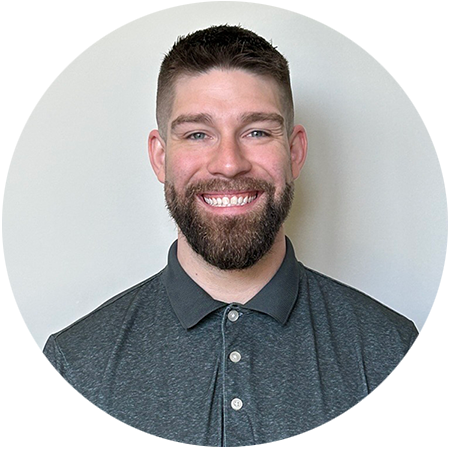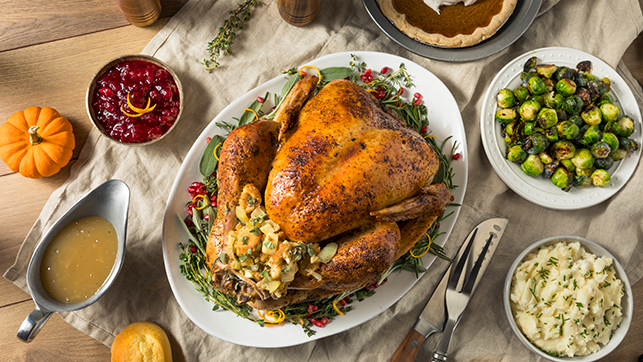With Thanksgiving right around the corner, we put together a few nutritional tips after meeting with Registered Dietitian Vince Bendotti from our Saint Joseph PACE center in Indiana.
Instead of an “all or nothing” approach, be it overeating and spending the day napping or cutting out so many foods it takes the joy out of the holiday, try focusing on the “Three P’s” to find balance this Thanksgiving.
Planning ahead can make a big difference. With so many dishes to look forward to, how do you set yourself up to enjoy both stuffing and pumpkin pie?
“Thanksgiving is an all-out day of eating and not about saying no to things. There are a lot of different ways to head in a healthier direction for the day. I am very much into the 80/20 rule – eating 80% of what you know is good for you and saving the 20% for enjoying yourself,” Vince said.
One thing to avoid is fasting before your meal. If you have something in your stomach, even a light breakfast, this helps you not to be so hungry you want everything. If you are trying not to overeat, make sure you have some food before the big meal.
Plan what you are going to eat ahead of time. Consider whether larger portions or second helpings are necessary. White meat is more calorie friendly than dark meat, and skipping the gravy helps cut fat and sodium.
If you are preparing your own food, you can make substitutions, when possible, e.g. olive oil versus butter, different types of flour, reduced fat, lower sodium, etcetera.
Physical activity makes an impact. Getting active isn’t usually at the top of our list for Thanksgiving Day, however incorporating light to moderate exercise is helpful.
“If we are thinking about physical activity and being active earlier on in the day – this is a better way to work in a calorie deficit than skipping breakfast,” Vince said.
Going on a walk after eating helps with digestion and blood sugar. Try finding a family member or friend who is on the same page and getting that activity in after dinner.
“A lot of people overeat, watch football, take naps and relax – plan to get that activity in either earlier or later,” Vince recommended.
Portion
An easy way to keep your portion sizes smaller is to use a smaller plate.
“A smaller plate helps with food waste. You don’t have to feel bad about throwing food away from being too full,” Vincent said.
Many of us can relate to our eyes being bigger than our stomach. Starting with a smaller plate is a simple way to avoid overeating.
Vince suggests asking yourself some questions about mindfulness with portions and nutrition:
- “What do I want to get out of this meal?”
- “What am I ingesting – a lot of processed food?”
- “Is there a salad or vegetable side dish I can add to my plate? Instead of another helping of pie, is there any fruit I could have instead?”
- “Do I need one of everything?”
The main takeaway: Fully enjoying our meal and honoring our health goals can go hand in hand.
As a Program of All-Inclusive Care for the Elderly (PACE), our team provides complete care with the participant at the heart of every health care decision. Our team includes a registered dietitian, rehabilitative therapists, a primary care provider, skilled nurse, driver, and personal care assistant. Learn about our care model here.
If you are looking for healthy recipes for Thanksgiving, check out this list from the Food Network.
Learn more about the benefits of walking after eating here.


